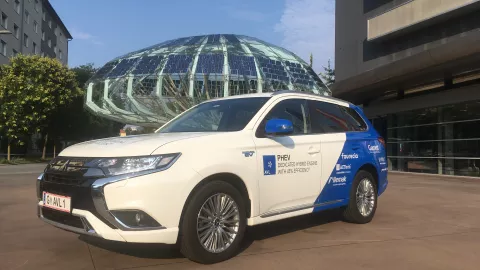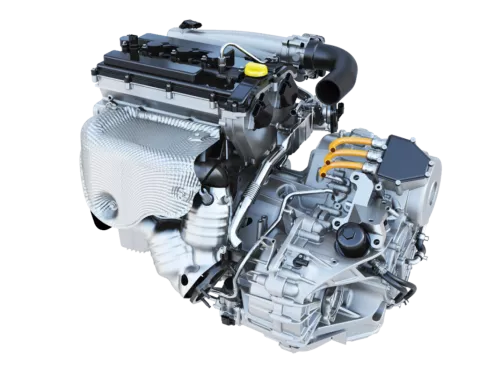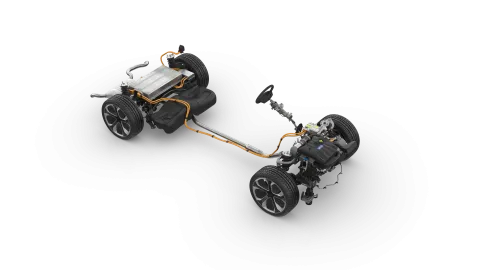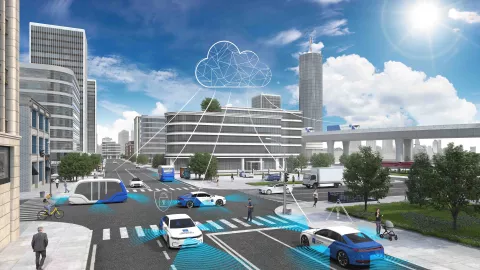Development of electrified internal combustion engines requires conflicting objectives to be met for legislation, technical values, and minimizing costs.
Particularly with regard to commercial vehicles, the focus is much more on total cost of ownership (TCO) than for passenger cars. Which is why total lifetime, reliability, and the highest level of efficiency must be ensured.
The modern commercial vehicle engine, with an effective efficiency of 50 %, is characterized by:
- High peak cylinder pressure capability enabled by AVL design solutions
- Advance combustion layout with fast burn duration and high compression ratio
- AVL Top Down Cooling
- Reduced friction and parasitic losses
- Optimized air handling with low pressure drops and high turbocharger efficiency
- Optimized heat-up and keep- warm measures, well-tailored to the base engine and application demands

Dedicated passenger-car-hybrid gasoline engine with 45 % effective efficiency Our key areas of focus for development are as follows:
- Reduced friction
- High geometric compression (>16:1)
- Optimal bore-stroke ratio related to efficiency
- High tumble combustion process for optimal carburetion and maximum residual gas tolerance
- Cooled low-pressure AGR
- E-TC/TC with optimized charging efficiency
- Reduction of wall thermal loss (surface finish, coating, …)
- Innovative AVL combustion control for maximum efficiency and maximum combustion stability, even in high-dynamic operation (high AGR rates)
- Innovative ignition (prechamber ignition, multispark, microwave ignition …)
- Thermal management
Diesel zero-impact concept car A 48 V demonstration vehicle focusing on low emissions has been constructed, based on a Hyundai Santa Fe with a 2.2 l diesel engine.
Technology elements investigated:
- 48 V P2 module with 20 kW e-motor
- Electrically heated catalytic converter
- Air circulation system to preheat exhaust system near to engine
- Twin-dosing SCR system
- Combined AGR system (low-pressure and high-pressure)
- Electrified auxiliary units
- Aggressive heating strategy
- Functional adjustment for operating strategy with optimized emissions and consumption
- Additionally: Evaluation of various battery sizes and e-motor power using simulation





